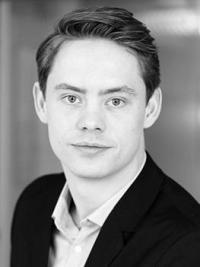Guest lectures and seminars - Page 11
The Section 4 seminar for the Autumn of 2023 will be held on Mondays at 10:15–12:00 (see the schedule)
The Deep learning seminar will be held on Thursdays at 10:15–12:00. Please register to this mailing list if you would like updates.
Fluid efflux from the brain plays an important role in solute waste clearance. Current experimental approaches provide little spatial information or data collection is limited due to short duration or low frequency of sampling. One approach shows tracer efflux to be independent of molecular size, indicating bulk flow, yet also decelerating like simple membrane diffusion. In an apparent contradiction to this report, other studies point to tracer efflux acceleration following infusions. In this talk, I will share a stylized advection-diffusion model for clearance of waste, which reconciles the apparent contradiction, and discuss methods to validate it with novel MRI data. Being stylized, it is also simple enough to permit a dimensional analysis which indicates that clearance of waste from the brain is governed by three dimensionless quantities including a potential bottle-neck for clearance due to transport across the surface membranes.
Cavitation is a ubiquitous and sometimes destructive, phenomenon. For instance, cavitation bubbles may interrupt water flow in plants or severely damage the surfaces of machines such as pumps and propellers. The so-called tribonucleation of vapor bubbles has been proposed to be responsible for the cracking sound produced by the manipulation of human synovial joints. To study cavitation up close we have developed an experimental setup where a sphere in water abruptly leaves a flat surface starting from a separation of only 10 nm.
Upon upward movement of the spherical surface, a cavitation bubble forms and develops branched fingers through the Saffmann-Taylor instability. Simultaneously, negative liquid pressures in the range of ∼10atm are observed. These large tension values occasionally lead to secondary nucleation events. The bubble sizes satisfy a predicted Familiy-Vicsek scaling law where the bubble area is proportional to the inverse bubble lifetime. The fact that creeping flow cavitation bubbles are more short lived the larger they are separate them from bubbles that are governed by inertial dynamics.


